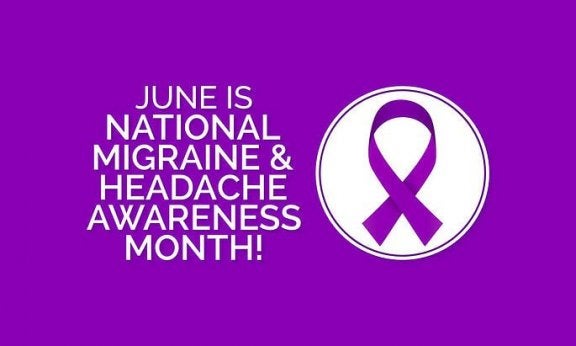NATIONAL MIGRAINE AND HEADACHE AWARENESS MONTH

In June, National Migraine and Headache Awareness Month shines a spotlight on a debilitating condition that affects 1 in 7 Americans. Migraines and headaches wreak confusion on a sufferer’s daily life. While a migraine is a headache, a headache isn’t always a migraine. Headaches cause pain in the neck, sinuses, face, and head. Migraines, however, cause debilitating pain, visual disturbances, or both. They can last for hours or days and are often chronic. Without relief, migraines can cause other symptoms such as nausea, vomiting, muscle weakness and can also lead to depression.
Migraines come in many forms.
Migraine with Aura (Complicated Migraine)
About a quarter of migraine sufferers experience an aura before or during a migraine. An aura comes in several forms and can impact vision, touch, speech, and even smell. Many consider their auras to be a warning sign that a migraine is imminent.
Migraine without Aura (Common Migraine)
Most migraine sufferers experience migraines without aura. This type of migraine is often accompanied by severe pain along one side of the head, light and sound sensitivity. However, these migraines don’t come with an aura and no warning that one is imminent.
Hemiplegic Migraine
While a Hemiplegic migraine is rare and doesn’t always include pain when it does, its severity and other symptoms compare with stroke symptoms. They are sudden, severe, and cause weakness on one side of the body. Like other migraines, it can last for hours or weeks.
Retinal Migraine
A migraine that causes temporary vision loss is a retinal migraine. While the symptoms may not last, it’s important to see a specialist if you suffer from this kind of migraine.
Chronic Migraine
Sufferers usually experience migraine pain more than 15 days a month.
Cluster Headaches
Affecting approximately 1 million Americans, cluster headaches are often seasonal, include pain around the eyes, temples and radiates toward the neck. This type of headache impacts fewer people, however, they are severe and occur in clusters.
Migraine requires a diagnosis by a physician. While treatments are available for migraines, it can take time to find one that works for you. Migraine sufferers often face stigma. Since nearly everyone has had a headache, a migraine is a different type of pain. Combined with variable duration and symptoms, migraines are more than “just a headache.” Missing work or events due to migraine adds to the stress of the condition. During National Migraine and Headache Awareness Month, it’s important to keep these concerns in mind when a friend or family member is dealing with a migraine.

